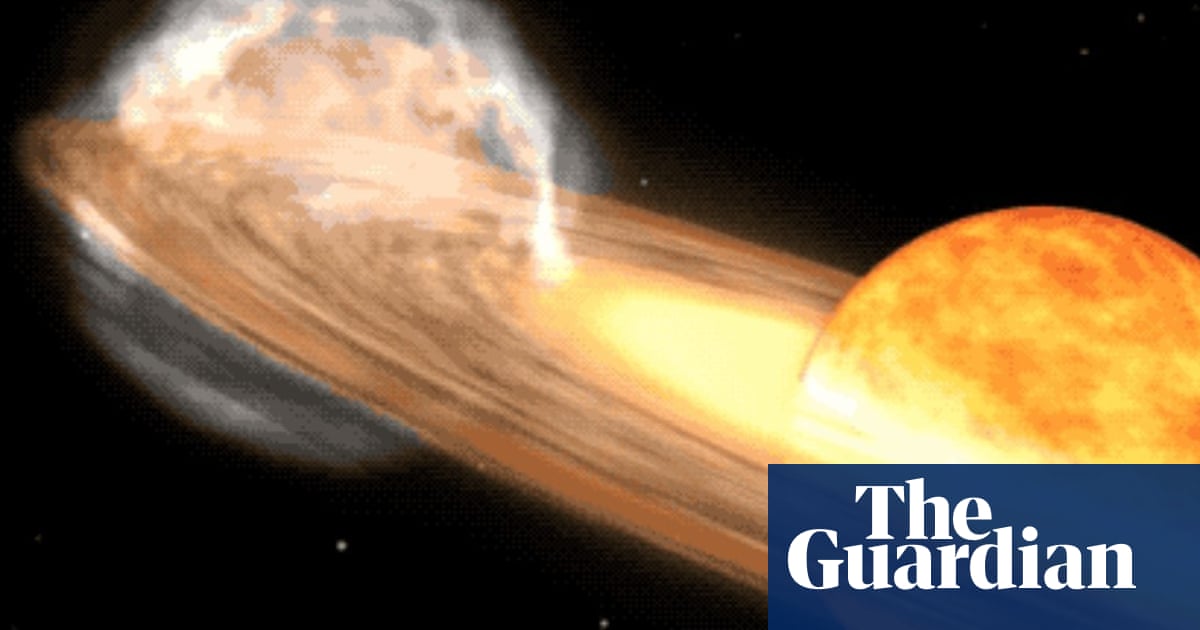Huge gravity of these dense stars, which have burned all their own fuel, rips apart smaller planetary bodies
It’s the end of the world, not quite as we know it.
Scientists from the University of Warwick and other universities have studied the impact white dwarfs – end-of-state stars that have burned all their fuel – have on planetary systems such as our own solar system.
When asteroids, moons and planets get close to white dwarfs, their huge gravity rips these small planetary bodies into smaller and smaller pieces, which continue to collide, eventually grinding them into dust.
While the researchers said Earth would probably be swallowed by our host star, the sun, before it becomes a white dwarf, the rest of our solar system, including asteroids between Mars and Jupiter, as well as moons of Jupiter, ultimately may be shredded by the sun in a white star form.



This makes no sense.
The mass, and thus the gravity of the sun would not increase. So, the outer planets would not experience any increase in pull unless they got closer to the sun. The shape that the sun is in, big and fluffy or small and compact, at any given time does not influence this.
I was thinking that, too, but prior to the Sun becoming a white dwarf, the Sun is predicted to expand and swallow Earth (and Venus and Mercury), so the Sun’s mass will increase. Assuming the Sun’s expansion lasts long enough to result in those planets being vaporized I would think that additional mass would go back in when the Sun contracts into a white dwarf.
Additionally this will mess up the orbital mass of the solar system so I could see how more asteroids (maybe even a planet?) could get dislodged from its orbit and eventually get swallowed by a dense white dwarf.
But yeah, if the sun just instantly went to a white dwarf from its current state then orbits would probably stay pretty similar. It’s the process in between that could cause some chaos.
Yeah, but the earth is tiny.
Even if the sun swallowed all the inner planets it would have very little effect on it’s overall mass.
Currently the sun contains about 99% of all the mass in the solar system. We’re not going to bother anyone with our little world
Two problems with your theory, that added mass is ejected as a planetary nebula prior to becoming a white dwarf. A considerable amount of mass is lost this way. Secondly the earth, venus, mars, and mercury together don’t even have a percent of a percent of the solar mass. The sun is ~332,000x more massive than the earth. The mass from eating up those planets will be a rounding error.
A quick look has the mass of Mercury, Venus and Earth at close to 2 times the mass of Earth by itself. The Sun is around 330,000 times the mass of Earth. Soaking up all the inner planets means a change of less than 1/10th of 1% to the mass of the Sun. It’s not going to have an appreciable effect on it’s gravitational pull. The Sun already holds the vast majority of the mass of the solar system. With Jupiter holding most of the rest.
Contrary to the headline, I suspect the only way the solar system will be destroyed by a white dwarf will be if one ends up whipping through our solar system. That would make for a very bad day.
That is not the mass increasing. It is the size. Size and mass are not the same thing.
Imagine a marshmallow, and a stone of the same size. Would they weigh the same?
edit: Nevermind, I understand you’re just adding the mass of the inner planets to it. That’s legit. It’s small though. It is also counteracted by the sun steadily losing mass as it shines. It kicks out all this energy and solar wind, right? Conservation of mass and energy says that has to cost something.